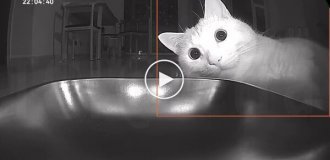China has unveiled a new development — cyber bees
This summer, the world learned that the future is already here — and it’s buzzing. First we were scared by mosquito-sized drones, now Chinese scientists have unveiled cyberbees — a hybrid of an insect and a remote-controlled robot.
Scientists from the Beijing Institute of Technology have connected bees to a 74-megapixel controller that remotely controls their visual lobes via electrical impulses.
To create this sci-fi system, the team printed circuits on a polymer film that is as thin and flexible as an insect wing, but capable of housing tiny computer chips.
The result: insects obediently fly “left and right” on command, like drones, but with living wings. The technology sounds like a script for a sci-fi action movie, but it’s reality: the insects carry out commands with 90% accuracy and can carry a load heavier than themselves.
The carrying capacity is truly impressive, the unfortunate insect can drag up to 80% of its body weight - ideal for delivering microchips or wiretapping. However, the controller's power supply is not so smooth. The device requires a wired power supply, and the autonomous batteries weigh 600 mg, which is too heavy for a bee (a 600 mg battery for a bee is like dragging a refrigerator for a person).
Control is limited to wings, since the legs and abdomen are not controlled. But even this data confuses competitors. The previous record of Singaporeans (chips for cockroaches) weighed three times more.
The hot sun was slowly setting over the experimental site. The last unchipped bee in the colony was making its evening flight, unaware that tomorrow it could be "modernized". Somewhere in the laboratory, prototypes for hornets were already being tested - the next candidates for cybernetic rebirth.
And in Taipei, an official nervously waved away an insect circling above his head on the street. "Just a bug," he convinced himself. But his eye continued to twitch traitorously; no one could be trusted. It was 2025.
























